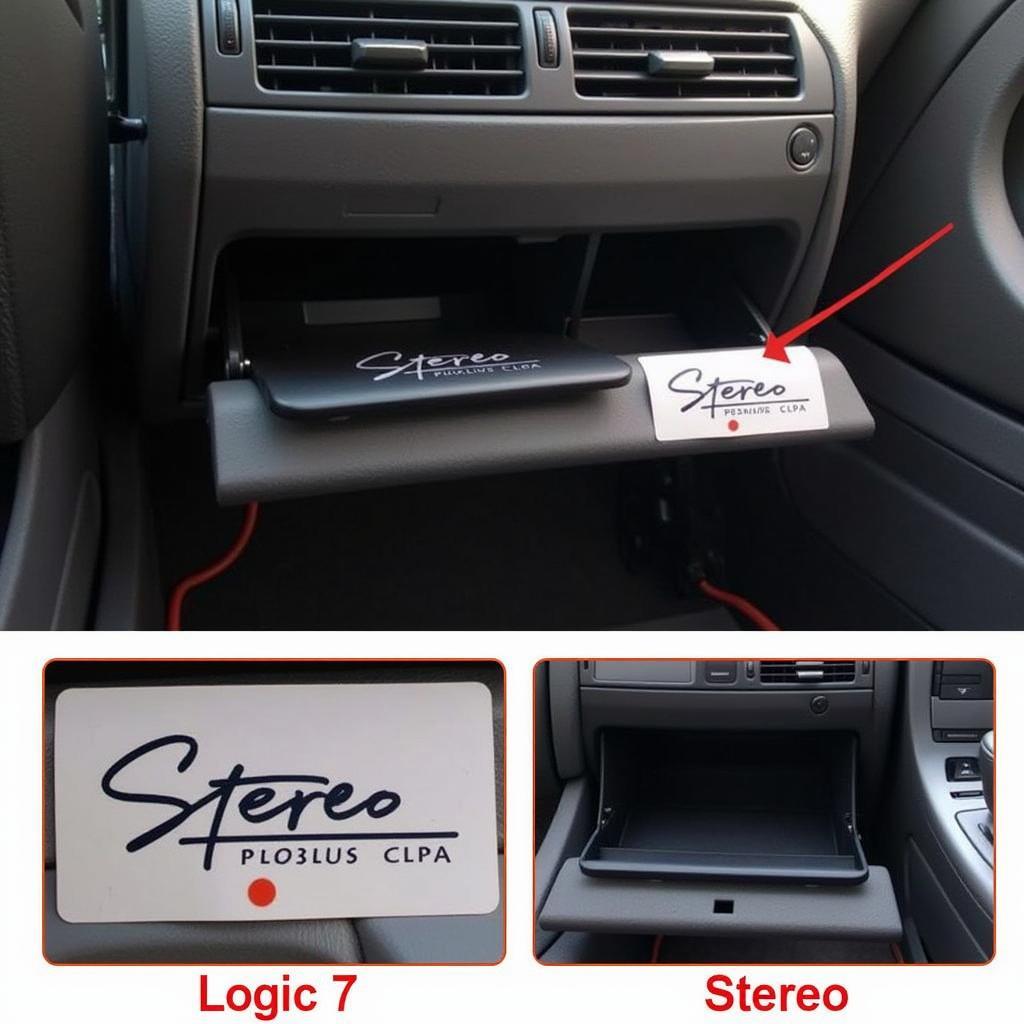The 2016 BMW R1200RT is a marvel of engineering, renowned for its smooth ride and sophisticated technology. However, like any complex machine, its audio system can sometimes present challenges. Whether you’re experiencing static, Bluetooth connectivity issues, or complete silence, this comprehensive guide will equip you with the knowledge to diagnose and potentially resolve these issues yourself.
Understanding Your 2016 BMW R1200RT Audio System
Before delving into troubleshooting, it’s crucial to understand the components that comprise your bike’s audio setup. The 2016 R1200RT typically features:
- Head Unit: The central control center for your audio, usually located on the handlebars.
- Speakers: Front-facing speakers, optimally positioned for rider and passenger enjoyment.
- Amplifier: This component boosts audio signals from the head unit to the speakers, delivering a richer sound.
- Bluetooth Module: Enables wireless connection to your smartphone or other Bluetooth-enabled devices.
- Wiring Harness: The network of wires transmitting signals between all components.
Common Audio System Issues and Solutions
Let’s explore some common problems riders encounter and how to address them:
1. No Sound or Intermittent Audio
Possible Causes:
- Loose Connections: Vibrations from riding can loosen connections in the wiring harness.
- Blown Fuse: A power surge or short circuit could have blown a fuse dedicated to the audio system.
- Faulty Amplifier: A malfunctioning amplifier will result in a significant decrease or complete loss of sound.
Troubleshooting Steps:
- Check the Fuse Box: Locate your bike’s fuse box (refer to your owner’s manual) and check the fuse associated with the audio system. Replace it if necessary.
- Inspect Connections: Carefully examine the wiring harness connections at the back of the head unit, amplifier, and speakers. Ensure they are secure and free of corrosion.
- Test the Amplifier (Optional): If you’re comfortable working with electronics, you can use a multimeter to test the amplifier’s power and ground connections.
2. Bluetooth Connectivity Problems
Possible Causes:
- Pairing Issues: Your phone and the bike’s Bluetooth module may not be correctly paired.
- Distance Limitations: Bluetooth has a limited range, so ensure your device is close enough to the bike.
- Software Glitches: Occasional software issues in either the bike’s system or your phone can disrupt Bluetooth functionality.
Troubleshooting Steps:
- Re-Pair Devices: “Forget” the bike’s Bluetooth connection on your phone and then re-pair the devices.
- Check for Updates: Ensure both your bike’s software and your phone’s operating system are up to date.
- Reset Head Unit: Consult your owner’s manual for instructions on how to reset your bike’s head unit to factory settings.
3. Static or Distorted Audio
Possible Causes:
- Antenna Problems: A loose or damaged antenna can introduce interference and static.
- Speaker Damage: Physical damage to the speakers or water exposure can cause distortion.
- Ground Loop: This occurs when there is more than one grounding path for the audio signal, causing a humming or buzzing noise.
Troubleshooting Steps:
- Inspect the Antenna: Ensure your bike’s antenna is securely fastened and free from any damage.
- Check Speaker Condition: Visually inspect your speakers for any tears, dents, or signs of water damage.
- Address Ground Loop (Advanced): If you suspect a ground loop, consult a qualified motorcycle technician to diagnose and rectify the issue.
When to Seek Professional Help
While this guide covers common audio issues, some problems require the expertise of trained technicians. If you’ve exhausted basic troubleshooting or are uncomfortable working with electrical components, it’s best to contact a qualified motorcycle mechanic or a specialized service provider like Cardiagtech.
“Modern motorcycle audio systems are intricately linked to the bike’s electrical and computer systems,” says John Miller, Senior Technician at Cardiagtech. “Attempting complex repairs without the proper knowledge and equipment can potentially exacerbate the problem.”
Remote Diagnostics and Software Solutions
In addition to traditional repair methods, remote diagnostics and software solutions are becoming increasingly popular in the automotive industry. Cardiagtech, for instance, specializes in remotely diagnosing and resolving software-related issues in vehicles, including motorcycles.
“Through remote diagnostics, we can often identify the root cause of the problem without the need for a physical inspection,” explains Emily Carter, Software Engineer at Cardiagtech. “In many cases, we can resolve the issue remotely by updating firmware, adjusting settings, or clearing error codes.”
Conclusion
Troubleshooting audio issues in your 2016 BMW R1200RT doesn’t have to be a daunting task. By understanding the common causes and following the troubleshooting steps outlined in this guide, you can often pinpoint and resolve the problem yourself. However, if you encounter complex issues or are unsure about any step, don’t hesitate to seek professional assistance from CARDIAGTECH. Contact us at +1 (641) 206-8880, email us at CARDIAGTECH[email protected], or visit our office at 276 Reock St, City of Orange, NJ 07050, United States. We’re here to help you get back on the road and enjoying your ride with crystal-clear audio.

